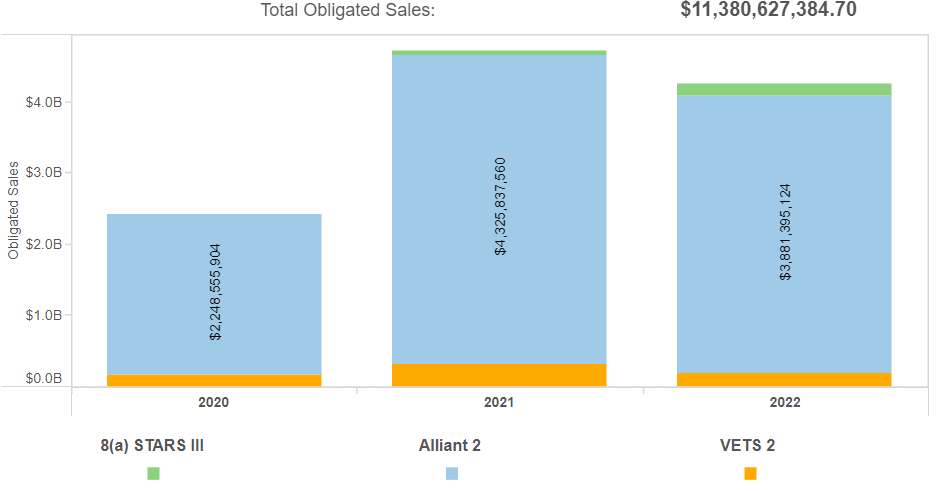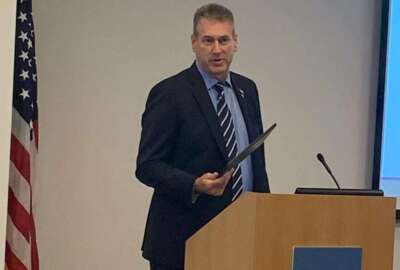GSA expects cloud services spending to continue rising, just not as fast as 2021
Allen Hill, the deputy assistant commissioner for Category Management in the Federal Acquisition Service at GSA, said agencies are moving toward managed services or...
Over the last five years, agencies have increased their spending on cloud services through the General Services Administration by 60%.
In 2016, agencies spent about $1 billion through the assorted GSA contract offerings. By 2021, that number grew to $1.6 billion.
Allen Hill, the deputy assistant commissioner for Category Management in the Federal Acquisition Service at GSA, said there are several reasons why cloud services became more ubiquitous across the government over the last few years, notwithstanding the pandemic.
“A lot of the drivers had to do with the enterprise type services that the cloud offers. For example, email-as-a-service and collaboration tools-as-a-service,” Hill said in an interview with Federal News Network after he spoke at the recent ACT-IAC Emerging Technology and Innovation Conference. “Why? Because we went to a remote environment that demand to have individual staff work at their homes and where they were at was so important. That change in direction for the agencies, rapidly scaling up to what was necessary was very important.”
GSA’s governmentwide acquisition contracts, such as Alliant 2 or OASIS for professional services, back up that point.
Agencies spent $4.7 billion on 273 task orders in 2021 through GSA’s GWACs, which includes Alliant 2, 8(a) STARS III and Vets 2. That is more than double what they spent in 2020. And for 2022, agencies are on pace to beat that total, spending $4.2 billion as of July.

On the OASIS, OASIS 8(a) and small business contracts, agencies spent $11.3 billion in 2021, up from $10 billion in 2020. For 2022, the OASIS family of contracts already has reached $7.2 billion in obligations as of July.
GSA is just beginning to work on Alliant 3, recently released more details on the OASIS-Plus and is preparing the solicitation for its cloud blanket purchase agreement called Ascend.
All of these contracts aim to continue to give agencies new or different options for how they can buy cloud services.
Business apps to the cloud
Hill, who is leaving GSA in August to become the new chief information officer at the Federal Communications Commission, said agencies are continuing to spend a lot of money on cloud services, but are more focused on business applications these days.
“It has slowed down this year. That’s really because of the scalability of the business applications and taking that very detailed look of what needs to occur for that transition to occur,” he said. “A couple of agencies who were early into cloud adoption were very deliberate in what they’re doing to move to the cloud because they can’t break the mission. That’s most important. Now they are taking a slower approach and making sure they have all the right infrastructure in place, the right skillsets from a staffing perspective to be able to move. A lot of agencies are handcuffed because they don’t necessarily have the skills there to move that.”
Aside from the workforce challenge that every agency faces, Hill said agencies are more interested in managed services or the “as-a-service” model to take advantage of the cloud’s scalability and enhanced security.
Hill said a recent report from research firm Gartner highlighted the attraction of managed services or the as-a-service model. The firm predicted that in the coming decade 95% of all IT spend will be on the as-a-service model.
“That’s important because the way technology is moving today is even faster than the days when I was an engineer. The ability to modernize technology today and use cloud platforms is seamless to the user and that’s very important,” he said. “Where in the traditional way, you buy the technology and then you go out there and buy the labor services to integrate it, moving to an as-a-service model, there’s the benefits of not only the technology, but the managed services for those skills that you may not have within your staff. You can then use that to bring beef up in other areas so you’re not sitting there waiting to hire IT people to do those type of services.”
The move to as-a-service or managed services becomes even more important as agencies implement software-defined networks (SDN) and start to move into 5G infrastructure.
Hill said 5G has a lot of opportunities that are becoming more mature and possible for agencies.
“The federal mobility group went on executive tours where we got to see a Department of Veterans Affairs hospital where they did augmented reality. I was able to put augmented reality goggles and I could sit there and go into a heart and touch different areas and see different things. I also went into another one where it was actually kind of like ‘Star Trek’ where I was sitting there, touching things in the air, doing things with the skull and moving things around. I was even flying unmanned aerial vehicles (UAV) drones,” he said. “We saw where they just pointed to a spot for the UAV to fly by itself without having the traditional remote control of the flight. They also were able to insert artificial intelligence so they could do identification of the individual that once the camera pointed to a person the drone could follow the individual around. That brings a huge amount of situational awareness to where command centers can remotely be able to do things, device being reliant on the person who to control their underground.”
Copyright © 2025 Federal News Network. All rights reserved. This website is not intended for users located within the European Economic Area.
Jason Miller is executive editor of Federal News Network and directs news coverage on the people, policy and programs of the federal government.
Follow @jmillerWFED






